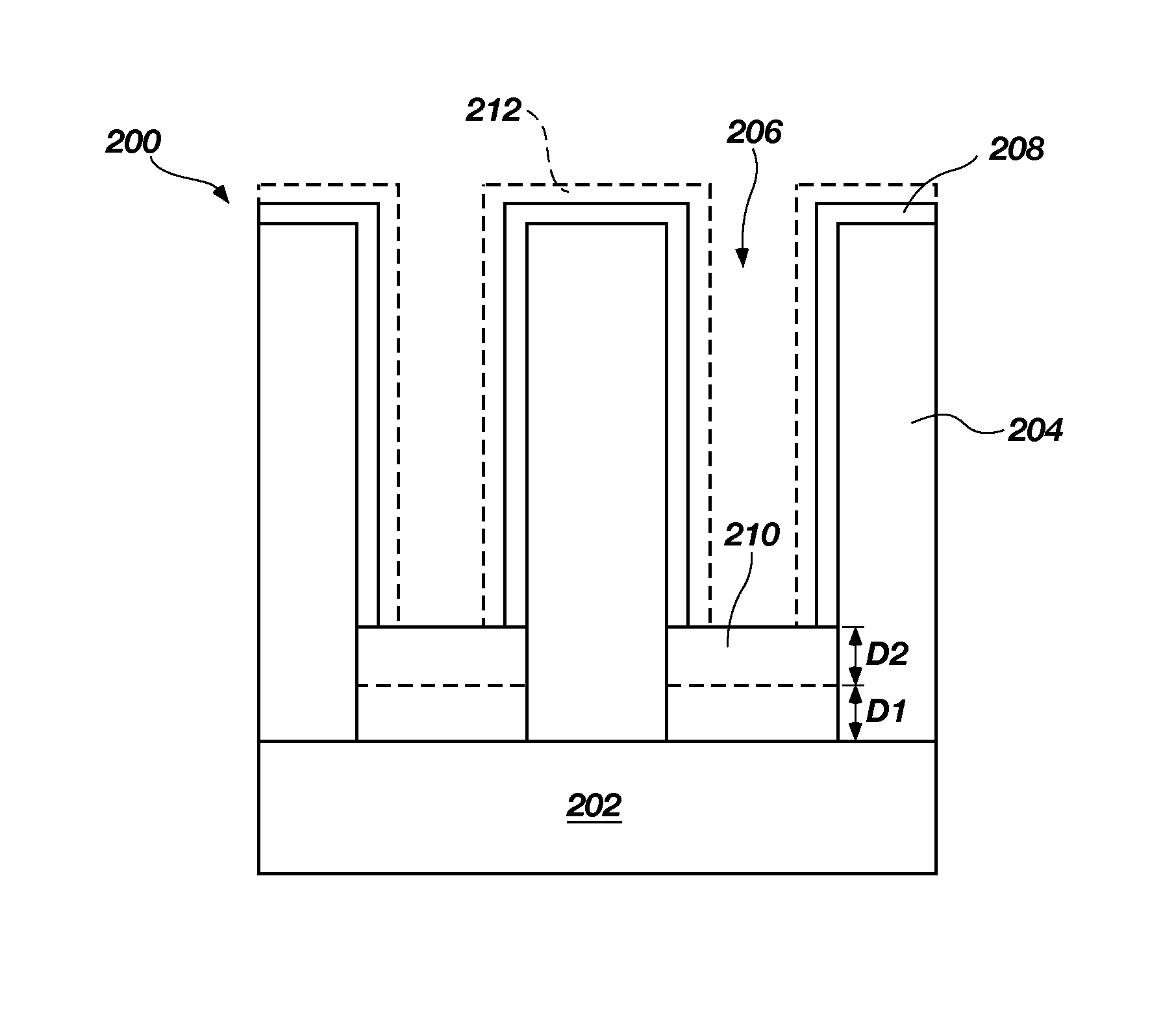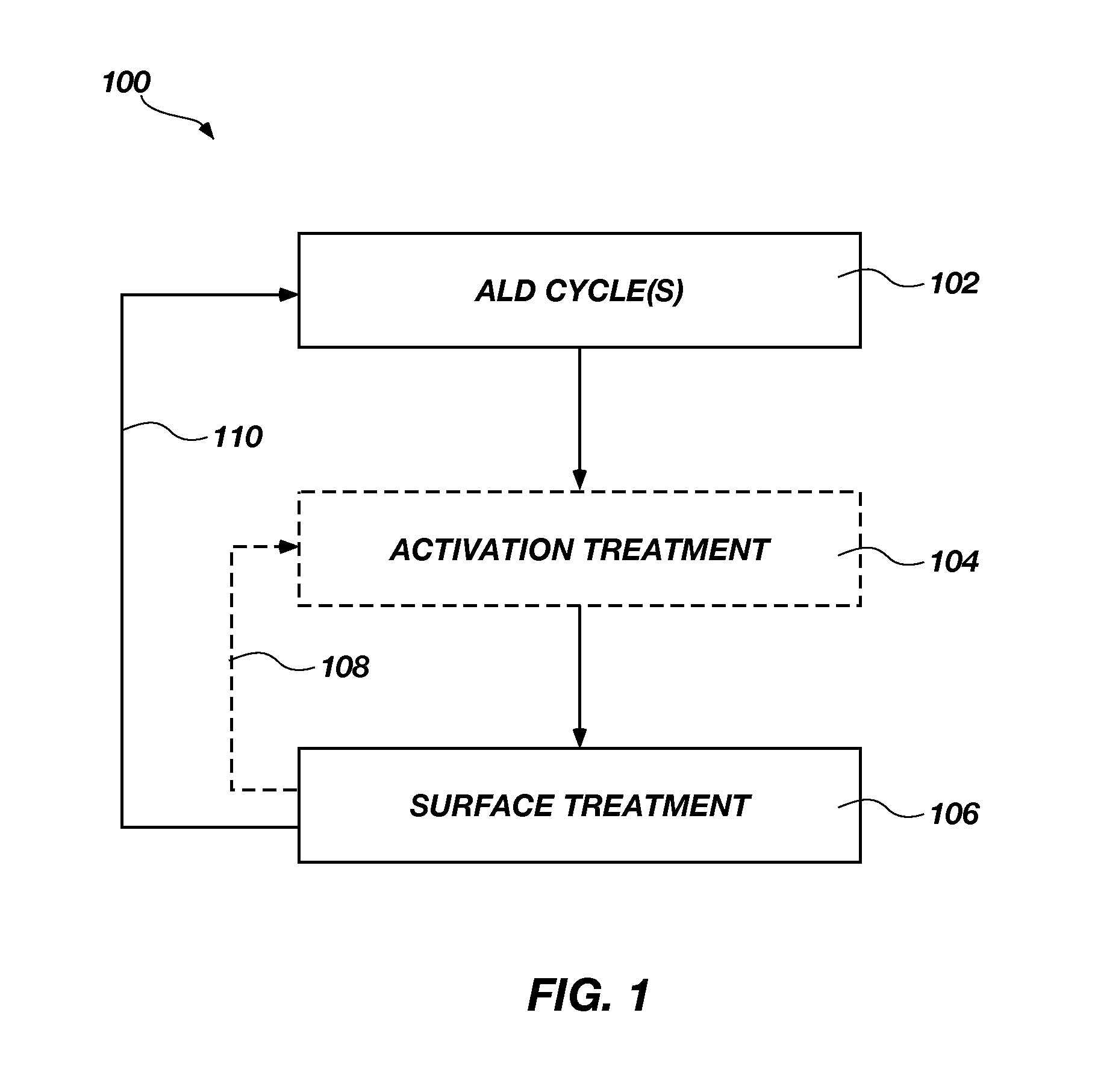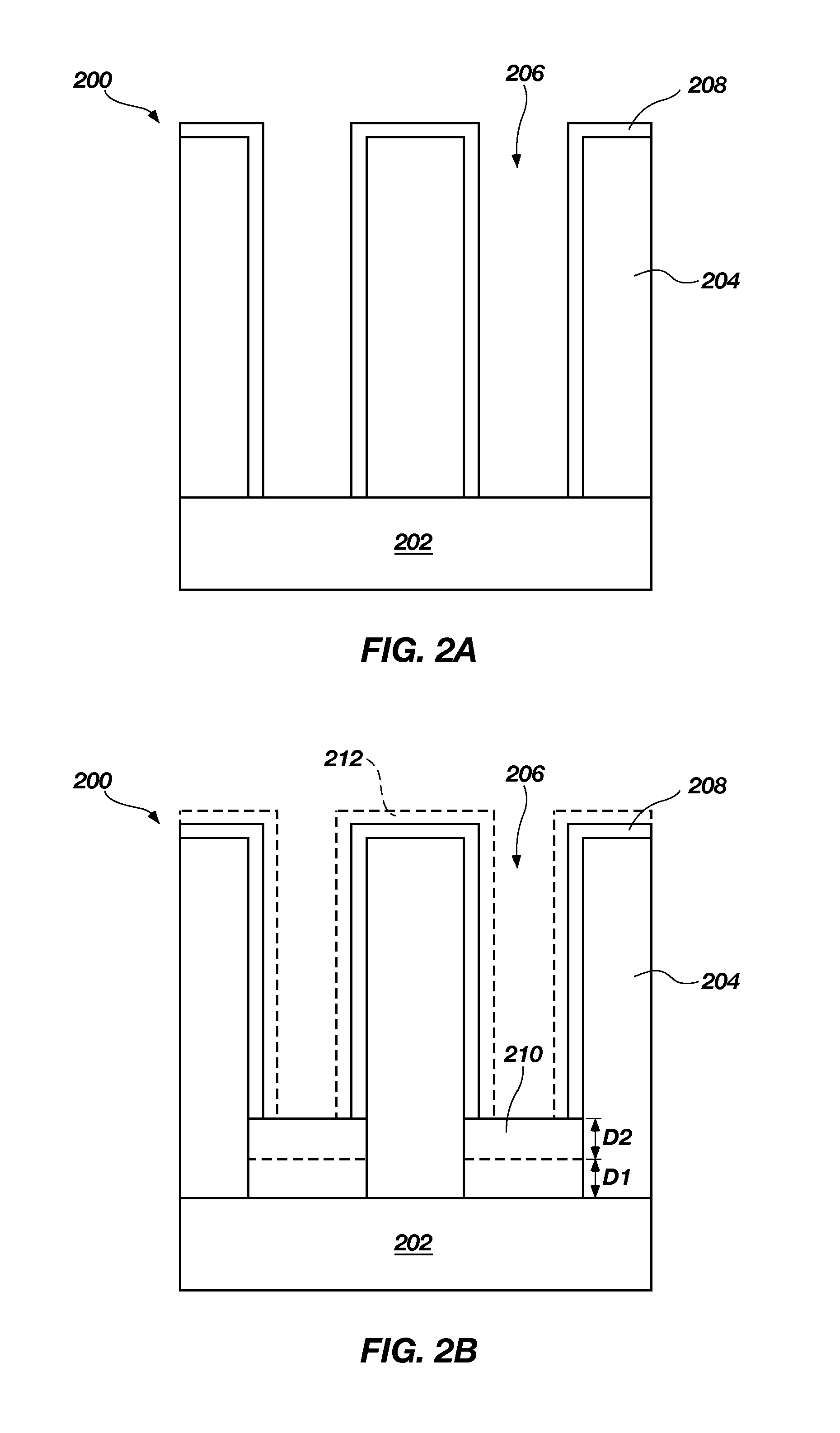Methods of selectively forming a material using parylene coating
- Summary
- Abstract
- Description
- Claims
- Application Information
AI Technical Summary
Benefits of technology
Problems solved by technology
Method used
Image
Examples
Embodiment Construction
[0010]The illustrations presented herein are not meant to be actual views of any particular component, device, or system, but are merely idealized representations that are employed to describe embodiments of the present invention.
[0011]As used herein, the terms “atomic layer deposition” and “ALD” mean and include a deposition process in which a plurality of consecutive deposition cycles is conducted in a reaction chamber or a deposition chamber.
[0012]As used herein, the term “ALD process” means and includes a process of forming a material using ALD and the term “ALD material” means and includes a material formed by an ALD process.
[0013]As used herein, the term “ALD cycle” means and includes sequentially introducing each precursor into a reaction chamber or a deposition chamber separately followed by pumping / purging the reaction chamber or the deposition chamber with an inert gas to prevent mixing or reacting of the precursors.
[0014]As used herein, the term “substrate” means and incl...
PUM
| Property | Measurement | Unit |
|---|---|---|
| Thickness | aaaaa | aaaaa |
Abstract
Description
Claims
Application Information
 Login to View More
Login to View More - R&D
- Intellectual Property
- Life Sciences
- Materials
- Tech Scout
- Unparalleled Data Quality
- Higher Quality Content
- 60% Fewer Hallucinations
Browse by: Latest US Patents, China's latest patents, Technical Efficacy Thesaurus, Application Domain, Technology Topic, Popular Technical Reports.
© 2025 PatSnap. All rights reserved.Legal|Privacy policy|Modern Slavery Act Transparency Statement|Sitemap|About US| Contact US: help@patsnap.com



